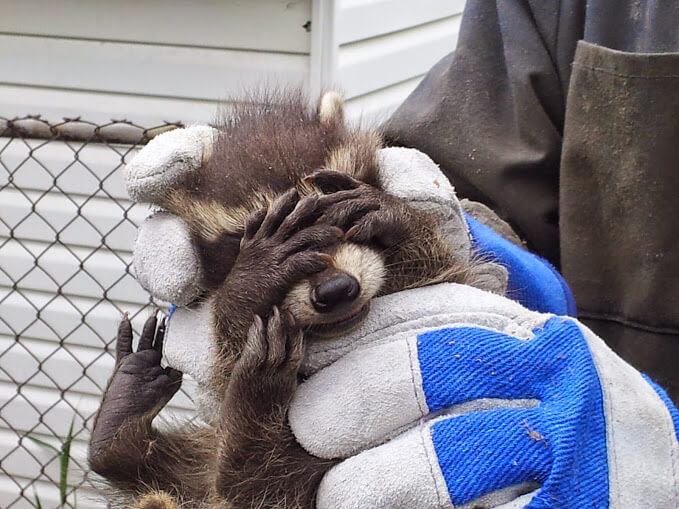While most people think that this mischievous critter is cute as an adult, the babies are even more adorable. But, you definitely don’t want one raccoon in your attic, let alone an entire family, so if you suspect an unwelcome masked houseguest, contact the professionals for raccoon removal Hamilton. As summer gets underway, you may spot baby raccoons out with mom. Here are 10 interesting facts about raccoon kits that you might not know.
1. Newborn Raccoons Are Entirely Dependent on Mom
When raccoons are born, they are completely helpless. They can neither see nor hear. The kits also can’t stand until they are about five weeks old! Baby raccoon nurse until they are between eight and 12 weeks old, after which time they’ll start venturing out with mom to learn the raccoon ropes.
2. Kits Are Born Without Masks
Babies are nearly bald and the little fur they do have is lighter than adult fur. They do not begin to develop their markings until they are several weeks old. At 10 weeks, you can see their masks, but the colour will continue to darken as they age.
3. Baby Raccoons Stick With Mom for a Year
Even though kits begin to learn how to be a raccoon within the first two to three months of their lives, they’ll stick around with mom for about a year. Sometimes the males will strike out on their own sooner, but the female kits den with their mother through their first winter.
4. Young Raccoons Form a Line
If you see a mother raccoon out and about with her little ones, you’ll notice that they all move in a straight line when travelling. As with ducks and geese, the baby raccoons line up behind mom whenever they’re on the move.
5. Kits Can Make a lot of Noise
Kits may be blind and deaf, but they sure can make a lot of noise! They vocalize when in distress, afraid, hungry or content. They may growl or hiss, mew or cry. When you have babies in your attic, you usually know it because of all the noise they make.
6. Raccoons Are Not Born Nocturnal
Raccoons are primarily nocturnal creatures, though isn’t entirely unusual to see them out and about in the daylight hours. Their nocturnal habits aren’t present at birth, and kits are often active in the middle of the day. As they mature, they begin to move to a more nocturnal schedule.
7. Young Males Often Stick Together
When juvenile males strike out on their own, they often band together. Though adult males often prefer to live more solitary lives, young ones frequently form small groups with other males.
8. Female Raccoons Grow up Faster than Male Raccoons
Female raccoons reach sexual maturity more quickly than males, even though they are more likely to stay with their mothers longer. When the females reach a year, they are capable of reproduction. The males take an additional year to attain maturity.
9. Baby Raccoons Eventually Grow Whiskers on Their Paws
Raccoons have dexterous digits on their front paws, and the pads on their fingers are nearly as sensitive as ours. They also have whiskers on their paws, improving their sense of touch. Baby raccoons get their whiskers by the time they head out to hunt and forage with their mother.
10. Kits Are Capable Hunters at 5 Months Old
You might think that raccoons get most of their meals from your garbage can, but these critters are actually adept hunters. By the time a kit is five months old, it can catch its own small prey, including birds and rodents.
Humane Raccoon Removal in Hamilton
Skedaddle technicians are trained in humane raccoon removal, and we ensure babies are reunited with their mother in a more suitable den. For more information or to schedule service, contact us today!



